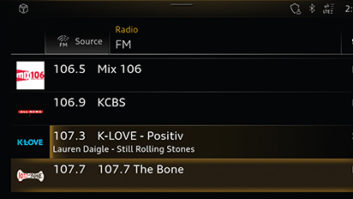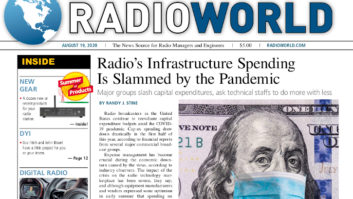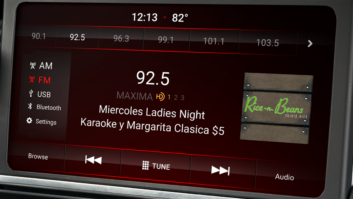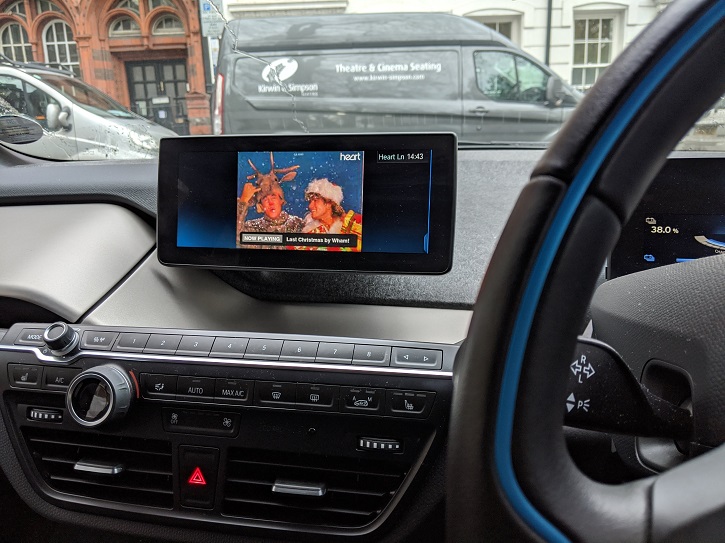
The author is project director of RadioDNS. His commentaries appear regularly in Radio World.
RadioDNS has a mission to accelerate the growth of hybrid radio by establishing standards that reduce the costs and complexity of implementation. There’s growing adoption of our technical standards, but not all the impediments to growth are technical.
Radio receivers used to be simple devices. They varied in terms of support for FM/AM, stereo and RDS, but the broadcaster could generally be confident that what they transmitted was what the listener heard. As radio receivers have added more functionality, the opportunities for the listener experience to diverge from what the broadcaster intended has increased.
Sometimes this divergence is simply a misunderstanding. Many auto manufacturers started to include radio station logos in their cars, which made radio more visually appealing, but they didn’t realize how frequently stations and logos change, so they made no provision for the logos to be updated.
Logos got out of date, or entirely wrong as stations rebranded, and broadcasters became frustrated that they couldn’t fix it. With the best intentions, manufacturers had implemented a great idea very badly.
[Related: “Hybrid Radio Picks Up Momentum”]
Conversely, many broadcasters tried to circumvent restrictions on displaying dynamic text in the vehicle by “scrolling” their RDS station names, in complete contravention to the standards. As well as being a generally pretty poor experience, it frustrated manufacturers’ development of better interfaces to broadcast radio, and even regressed radio in some vehicles. Some broadcasters even misused the emergency signaling protocols to “hijack” listeners to their stations.
Most controversially, a radio was released that supported album art/visual content from radio stations, but utilized an internet connection to add preroll audio adverts to broadcast radio, and insert advertising into the radio station’s visual stream, without a station’s knowledge.
Mistakes have been made on both sides. Some times with good intent, sometimes not so. But each time the assumption was “this will be OK.”
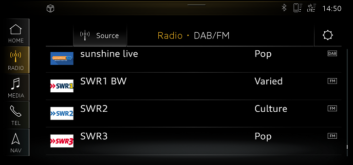
Our latest activity is to be clearer about what “OK” looks like for radio, recognizing that the opportunity for there to be disagreements about what “OK” is has grown in line with the additional functionality that connectivity brings. Whilst our scope is hybrid radio, we think some of our thinking might also be useful for streaming and digital broadcast radio.
Our “Radio Device Metadata Terms” is an attempt to codify acceptable use of content made available by radio stations for radio devices.
It’s a standard template agreement that broadcasters can adopt if they think it describes how they’d like their metadata and content to be used. We think a standard is valuable because it dramatically reduces the complexity of working out what “OK” looks like, and establishes a consistency that allows manufacturers to make a radio that works for the majority of radio stations globally.
Much of it is pretty obvious: Don’t change the radio station logos, don’t edit or rewrite content provided by the radio station. Don’t add your own unauthorized content (or advertisements) to a radio station’s content.
Some of this is putting into writing things that should be clear now. The radio station should have all the necessary rights to distribute the metadata and content, and they should stick to the technical standards. They should be reasonable about how long content (like logos) can be stored before it’s deleted.
Nevertheless, it has taken time to consult and discuss these issues with all the stakeholders, because it inevitably creates some changes and places some (reasonable) restrictions in place in order to get consistency. We’ve taken input and circulated multiple drafts of the agreement so that people can understand how it will help and affect them.
We hope to publish the first version of Radio Device Metadata Terms on our website in the autumn. The key attributes are:
- It is a standard document which broadcasters and manufacturers can refer to, but RadioDNS isn’t a party to any agreement. Our role is to enable the market, but not participate or intermediate.
- Broadcasters can voluntarily adopt it by linking to it from their RadioDNS metadata. If a broadcaster adopts it, manufacturers should abide by it, but RadioDNS won’t be a party to resolving any disputes.
- If a manufacturer agrees with the terms, they can use all the content from any broadcaster globally offered under the terms.
- The terms don’t cover all use cases, and they don’t preclude any cases. If a broadcaster and manufacturer want to do something outside the scope of the terms, they can create their own agreement between them. That could be by extending the terms, or completely replacing it.
We’ll be providing guidance on how to implement the terms to both broadcasters and manufacturers. We hope it allows broadcasters and manufacturers to move forward with hybrid radio faster, with fewer chances of misunderstandings. We expect it to be widely adopted during 2021.
You can learn more at the Radio Device Metadata Terms portion of our website.
RadioDNS is funded by its members, and provides a uniquely non-partisan environment for stakeholders to discuss and resolve issues surfaced by the evolution of broadcast radio enabled by combined broadcast and IP. We’re really proud that our members represent every sector of the global broadcast radio industry.
Comment on this or any story. Email radioworld@futurenet.com.
